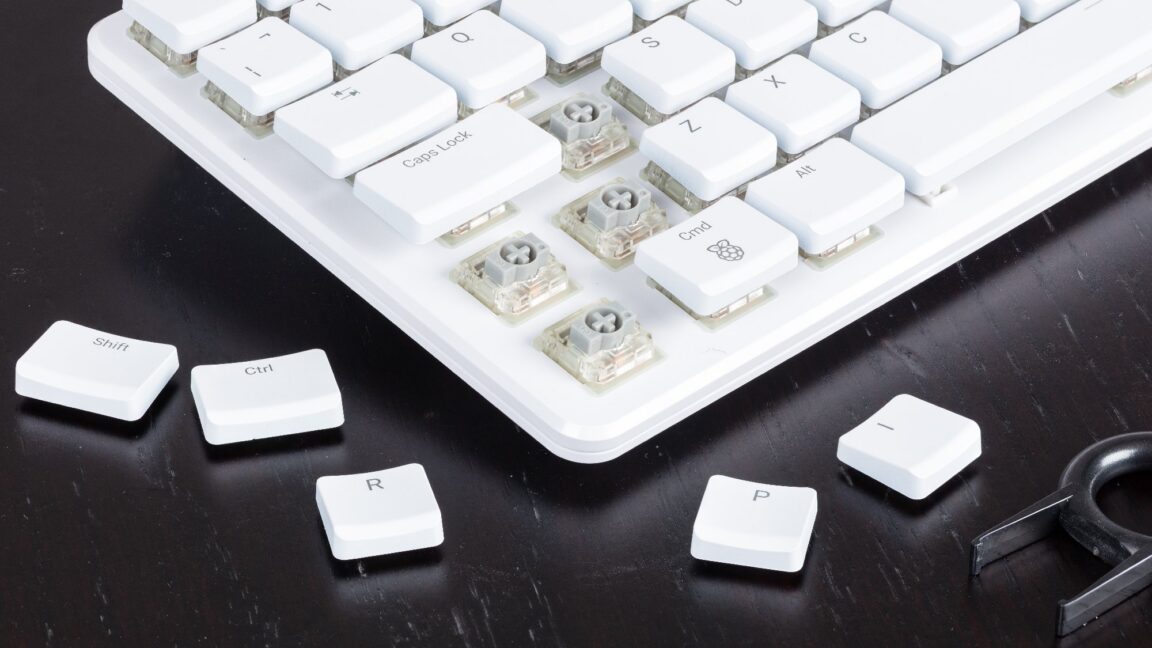#mechanical-keyboard
#mechanical-keyboard
[ follow ]
#wireless-connectivity #raspberry-pi #touch-strip-controls #customization #deltaforce-65 #gateron-red #qmk-via
fromWIRED
4 days agoThe DeltaForce 65 Brings Das Keyboard Into the Modern Keyboard Era-for Better or Worse
The typing experience with this keyboard is ... alright. It's nothing special, not worth writing home about, but it's not bad. The switches are light to type on, being tried-and-true Gateron Red switches with a 45-gram actuation weight. These are a proven design that feels smooth and has been used for years without issue, but they won't blow you away, especially if you're somewhat familiar with modern mechanical switches.
Gadgets
fromYanko Design - Modern Industrial Design News
1 week agoForget Portable Monitors, This Foldable Keyboard Has a Built-in 12.8-inch Touchscreen - Yanko Design
The dream of the perfect mobile workstation often involves a series of compromises. You can have a powerful laptop, but you're stuck with a single, small screen. You can bring a portable monitor, but that's another device to pack, another cable to manage, and another stand to set up. For those who refuse to give up the satisfying feedback of a mechanical keyboard, that's yet another piece of gear to haul.
Gadgets
fromThe Verge
3 weeks agoRaspberry Pi upgraded its keyboard computer with mechanical switches and SSD storage
The Raspberry Pi 500 Plus is the first to feature an M.2 2280 SSD socket for storage in addition to an SD card slot that can be used to hold the OS. It comes with 256GB of storage, but it's easily accessible if you want to swap in a larger SSD. Available now for $200, the Raspberry Pi 500 Plus is considerably more expensive than the Raspberry Pi 500 that's still available for $90, but the upgrades aren't just limited to expanded storage.
Gadgets
fromWIRED
1 month agoSave $36 on a Cool, Compact Hall Effect Keyboard
Think of a keyboard switch like light switches. They have a fixed point where they activate, and all they can report is whether they're in one of two states. Hall effect switches are more like light dimmer knobs. They know exactly where they currently are and can report that information back to the computer, which has a number of advantages over traditional keyboard switches.
Gadgets
fromwww.esquire.com
1 month agoThe 5 Best Mechanical Keyboards To Buy in 2025
What's makes it a mechanical keyboard? A mechanical keyboard has discreet tactile switches beneath every key. The other main type of keyboard you see is a membrane keyboard, like those that still come in many laptops. What is a keyboard switch? The switch is the part on a keyboard beneath the key cap you type on. It is the part that gets pressed so your keystroke is registered. Different switches have different sounds and feels.
Gadgets
fromYanko Design - Modern Industrial Design News
1 month agoThis DIY Framework 13 Mod Turns a Modern Laptop into a Retro Mechanical Marvel - Yanko Design
DIY laptop mods that blend modern hardware with retro aesthetics are having a moment, and it's easy to understand why. Modern ultrabooks prioritize thinness and portability over tactile satisfaction, leaving many users longing for the chunky, satisfying keyboards and analog controls that made 1990s laptops feel substantial and purposeful. One ambitious modder has answered that call with something truly special.
Gadgets
Gadgets
fromYanko Design - Modern Industrial Design News
5 months agoUltra-Slim Cyberpunk Keyboard is 37% slimmer than Apple's own Magic Keyboard - Yanko Design
The mikefive keyboard redefines mechanical design with its slim profile, tactile key switches, and sleek aesthetics, making it exceptionally functional and visually striking.
[ Load more ]

